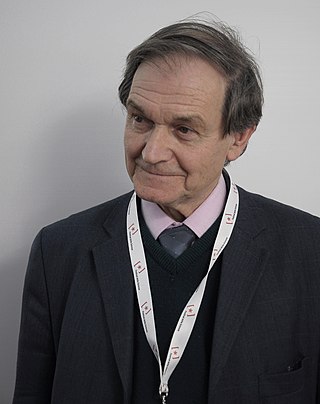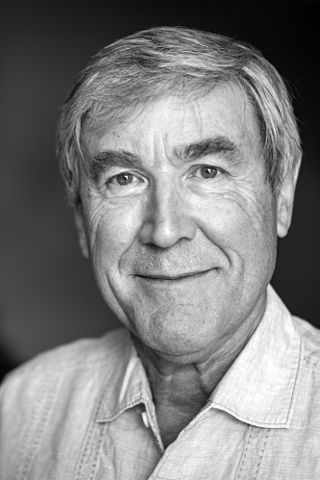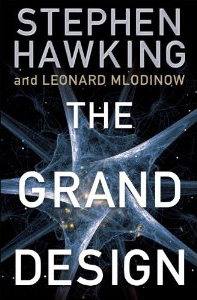
Sir Roger Penrose is an English mathematician, mathematical physicist, philosopher of science and Nobel Laureate in Physics. He is Emeritus Rouse Ball Professor of Mathematics in the University of Oxford, an emeritus fellow of Wadham College, Oxford, and an honorary fellow of St John's College, Cambridge, and University College London.

Biophysics is an interdisciplinary science that applies approaches and methods traditionally used in physics to study biological phenomena. Biophysics covers all scales of biological organization, from molecular to organismic and populations. Biophysical research shares significant overlap with biochemistry, molecular biology, physical chemistry, physiology, nanotechnology, bioengineering, computational biology, biomechanics, developmental biology and systems biology.

The cytoskeleton is a complex, dynamic network of interlinking protein filaments present in the cytoplasm of all cells, including those of bacteria and archaea. In eukaryotes, it extends from the cell nucleus to the cell membrane and is composed of similar proteins in the various organisms. It is composed of three main components: microfilaments, intermediate filaments, and microtubules, and these are all capable of rapid growth or disassembly depending on the cell's requirements.

Stuart Hameroff is an American anesthesiologist and professor at the University of Arizona known for his studies of consciousness and his controversial contention that consciousness originates from quantum states in neural microtubules. He is the lead organizer of the Science of Consciousness conference.

Paul Charles William Davies is an English physicist, writer and broadcaster, a professor in Arizona State University and director of BEYOND: Center for Fundamental Concepts in Science. He is affiliated with the Institute for Quantum Studies in Chapman University in California. He previously held academic appointments in the University of Cambridge, University College London, University of Newcastle upon Tyne, University of Adelaide and Macquarie University. His research interests are in the fields of cosmology, quantum field theory, and astrobiology.

Orchestrated objective reduction is a theory which postulates that consciousness originates at the quantum level inside neurons, rather than the conventional view that it is a product of connections between neurons. The mechanism is held to be a quantum process called objective reduction that is orchestrated by cellular structures called microtubules. It is proposed that the theory may answer the hard problem of consciousness and provide a mechanism for free will. The hypothesis was first put forward in the early 1990s by Nobel laureate for physics, Roger Penrose, and anaesthesiologist Stuart Hameroff. The hypothesis combines approaches from molecular biology, neuroscience, pharmacology, philosophy, quantum information theory, and quantum gravity.

Walter Maurice Elsasser was a German-born American physicist, a developer of the presently accepted dynamo theory as an explanation of the Earth's magnetism. He proposed that this magnetic field resulted from electric currents induced in the fluid outer core of the Earth. He revealed the history of the Earth's magnetic field by the study of the magnetic orientation of minerals in rocks. He was also the first to suggest that the wave-like nature of matter might be investigated by electron scattering experiments using crystalline solids.
Quantum mysticism, sometimes referred pejoratively to as quantum quackery or quantum woo, is a set of metaphysical beliefs and associated practices that seek to relate consciousness, intelligence, spirituality, or mystical worldviews to the ideas of quantum mechanics and its interpretations. Quantum mysticism is considered pseudoscience by quantum mechanics experts or quackery.

Shadows of the Mind: A Search for the Missing Science of Consciousness is a 1994 book by mathematical physicist Roger Penrose that serves as a followup to his 1989 book The Emperor's New Mind: Concerning Computers, Minds and The Laws of Physics.
The quantum mind or quantum consciousness is a group of hypotheses proposing that local physical laws and interactions from classical mechanics or connections between neurons alone cannot explain consciousness, positing instead that quantum-mechanical phenomena, such as entanglement and superposition that cause nonlocalized quantum effects, interacting in smaller features of the brain than cells, may play an important part in the brain's function and could explain critical aspects of consciousness. These scientific hypotheses are as yet unvalidated, and they can overlap with quantum mysticism.
In quantum mechanics, superdeterminism is a loophole in Bell's theorem. By postulating that all systems being measured are correlated with the choices of which measurements to make on them, the assumptions of the theorem are no longer fulfilled. A hidden variables theory which is superdeterministic can thus fulfill Bell's notion of local causality and still violate the inequalities derived from Bell's theorem. This makes it possible to construct a local hidden-variable theory that reproduces the predictions of quantum mechanics, for which a few toy models have been proposed. In addition to being deterministic, superdeterministic models also postulate correlations between the state that is measured and the measurement setting.
Quantum biology is the study of applications of quantum mechanics and theoretical chemistry to aspects of biology that cannot be accurately described by the classical laws of physics. An understanding of fundamental quantum interactions is important because they determine the properties of the next level of organization in biological systems.
Neil Fraser Johnson is an English physicist who is notable for his work in complexity theory and complex systems, spanning quantum information, econophysics, and condensed matter physics. He is currently Professor of Physics at George Washington University in Washington D.C. where he heads up a new initiative in Complexity and Data Science which combines cross-disciplinary fundamental research with data science, with a view to resolving complex real-world problems.

Apoorva D. Patel is a professor at the Centre for High Energy Physics, Indian Institute of Science, Bangalore. He is notable for his work on quantum algorithms, and the application of information theory concepts to understand the structure of genetic languages. His major field of work has been the theory of quantum chromodynamics, where he has used lattice gauge theory techniques to investigate spectral properties, phase transitions, and matrix elements.

Arun Kumar Pati is an Indian physicist notable for his research in quantum information, quantum computation and Foundations of quantum mechanics. He has made pioneering contributions in the area of quantum information.
Sergey M. Bezrukov is a Russian born biophysicist notable for his work on ion channels and stochastic resonance.
Howard Mark Wiseman is an Australian theoretical and quantum physicist, who notable for his work on quantum feedback control, quantum measurements, quantum information, open quantum systems, the many interacting worlds interpretation of quantum mechanics, and other topics in quantum foundations.

The Grand Design is a popular-science book written by physicists Stephen Hawking and Leonard Mlodinow and published by Bantam Books in 2010. The book examines the history of scientific knowledge about the universe and explains eleven-dimensional M-theory. The authors of the book point out that a Unified Field Theory may not exist.
Models of consciousness are used to illustrate and aid in understanding and explaining distinctive aspects of consciousness. Sometimes the models are labeled theories of consciousness. Anil Seth defines such models as those that relate brain phenomena such as fast irregular electrical activity and widespread brain activation to properties of consciousness such as qualia. Seth allows for different types of models including mathematical, logical, verbal and conceptual models.
Quantum social science is an emerging field of interdisciplinary research which draws parallels between quantum physics and the social sciences. Although there is no settled consensus on a single approach, a unifying theme is that, while the social sciences have long modelled themselves on mechanistic science, they can learn much from quantum ideas such as complementarity and entanglement. Some authors are motivated by quantum mind theories that the brain, and therefore human interactions, are literally based on quantum processes, while others are more interested in taking advantage of the quantum toolkit to simulate social behaviours which elude classical treatment. Quantum ideas have been particularly influential in psychology but are starting to affect other areas such as international relations and diplomacy in what one 2018 paper called a "quantum turn in the social sciences".











